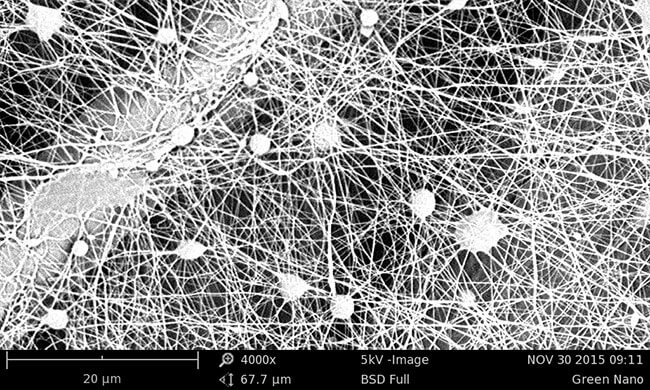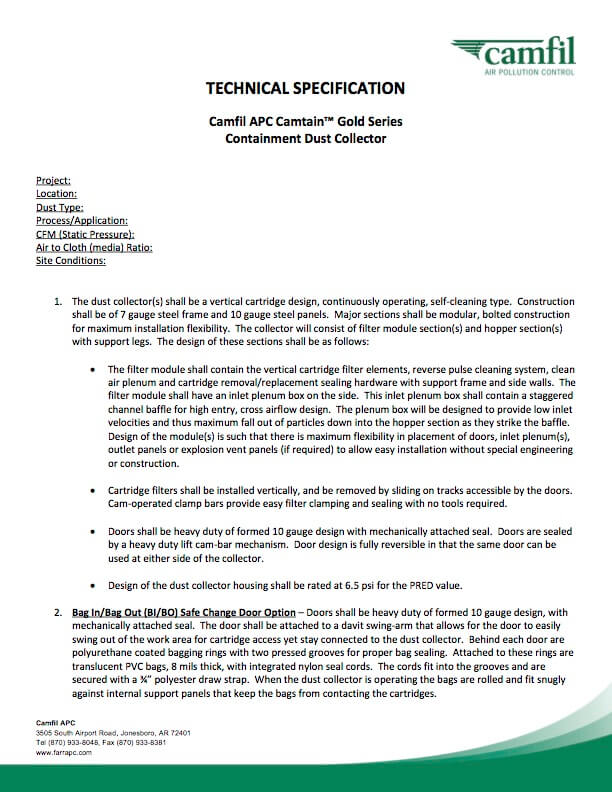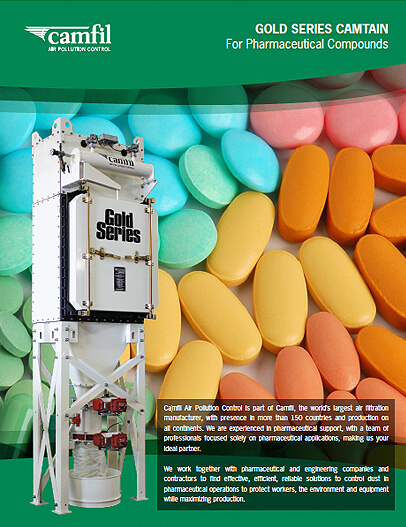Aid Compliance and Improve Dust Collector Performance
Camfil APC recognizes that a dust collection system is a major capital investment and can be a costly operating expense if it doesn’t work properly. Our state-of-the-art dust collection test facility can provide the data you need to avoid guesswork and invest wisely.
We can perform a battery of bench tests on your sample dust, including simulated challenges. We analyze your performance requirements and use this information to develop the best collection system for your needs.


Dust Testing Methods
Particle Size Analysis
This reveals the dust particle size distribution down to the submicron range. This information determines the filtration efficiency required to meet emissions standards. We use a dual-laser particle analyzer to determine the distribution of particles across a range of sizes and the volume or mass spread of the dust. It is important to know both because many dusts are mixed in the air prior to collection.
For example, the exhaust dust from a plasma cutter includes submicron carbon particles mixed with much larger steel particles. Scientific testing is the only way to identify the tiny particles of carbon dust, which helps you choose the appropriate equipment and filter media. Sieve analysis is a related test that measures particle size larger than 100 microns.
Video Microscopes

An optical microscope and a scanning electron microscope (SEM) can be used to visually determine dust shape and characteristics. The optical microscope is used to observer the shape of the particles and the SEM provides elemental analysis and detailed media images. A scanning electron microscope's 4000x magnification provides a clear view of nanofibers on filter media. The data is combined with the particle size analysis to help determine what type of dust collector and filters are best for collecting this type of dust.
Abrasion Testing
Abrasion testing helps determine the optimal design of dust-handling components based on how abrasive the dust is. This includes the design of inlets, baffles, discharges, and ductwork. It is important because when capturing a highly abrasive dust, like cast iron grindings, the collector must be designed with low inlet velocity. If the inlet velocity is too high, the dust will abrade the filters and cause premature wear.
Other Testing
Moisture testing is also a very important part of dust testing because excessive moisture can lead to poor filter life. If you are dealing with moist dusts, early detection is important to select the proper type of filter media. We use a hygrometer to identify the presence of moisture in the dust. If necessary, we then dry the sample to determine the moisture by weight as a percentage. We also test to determine equipment designs like hopper angle and conveying velocities.
 Americas
Americas 
